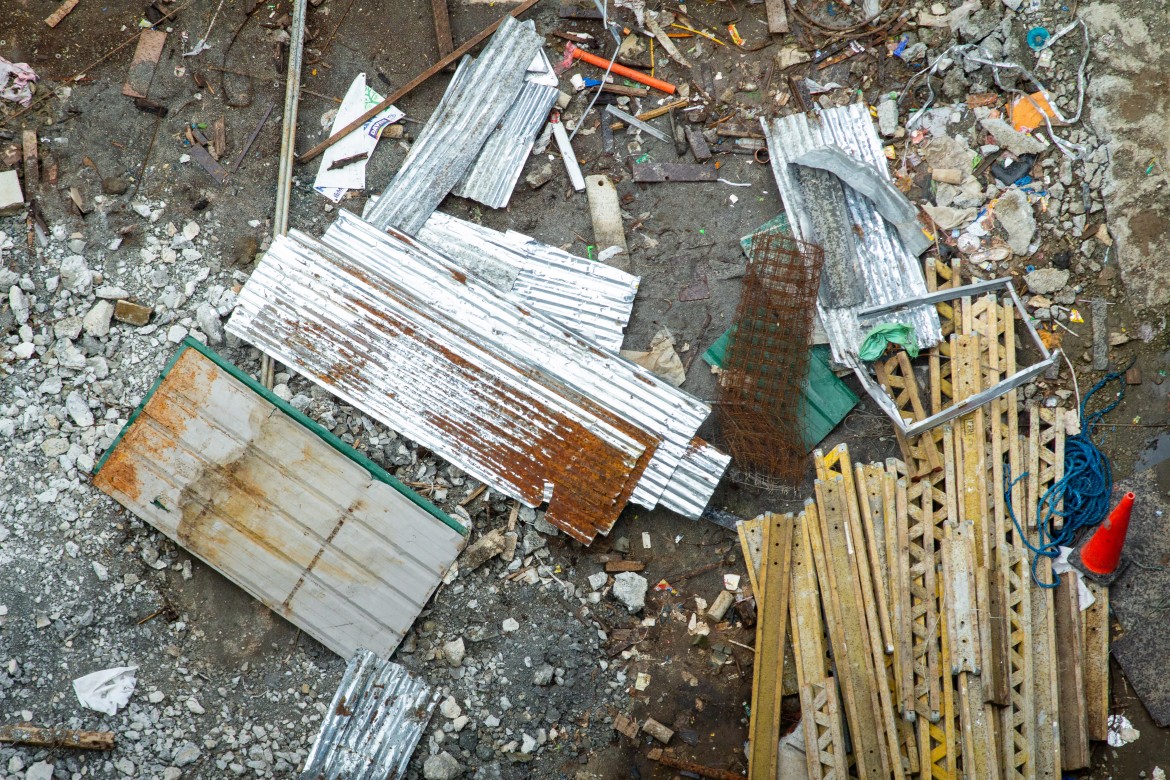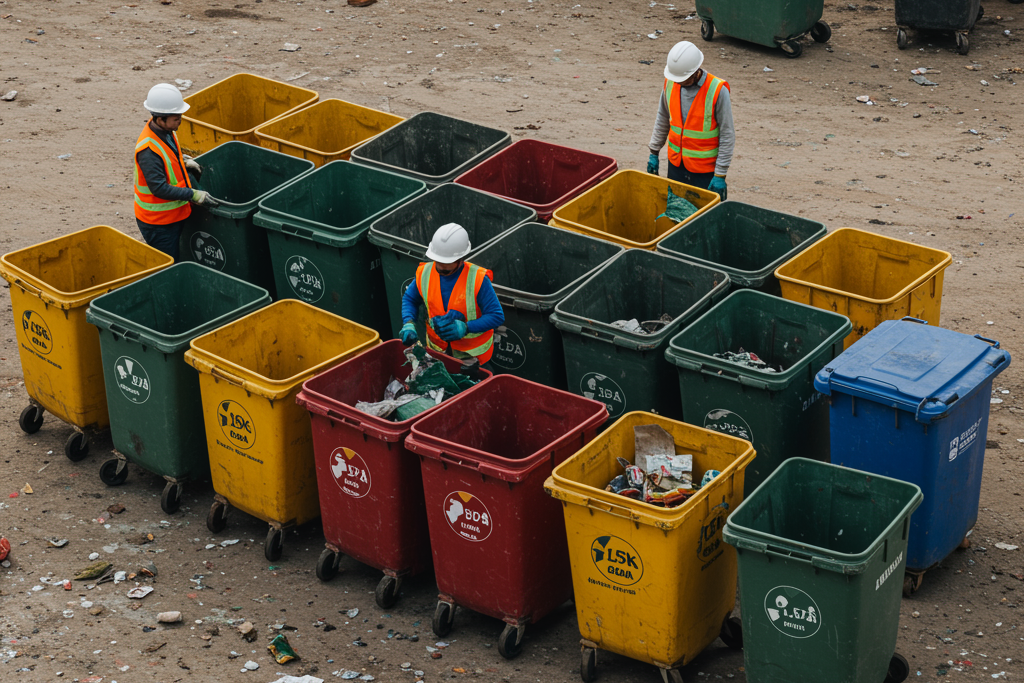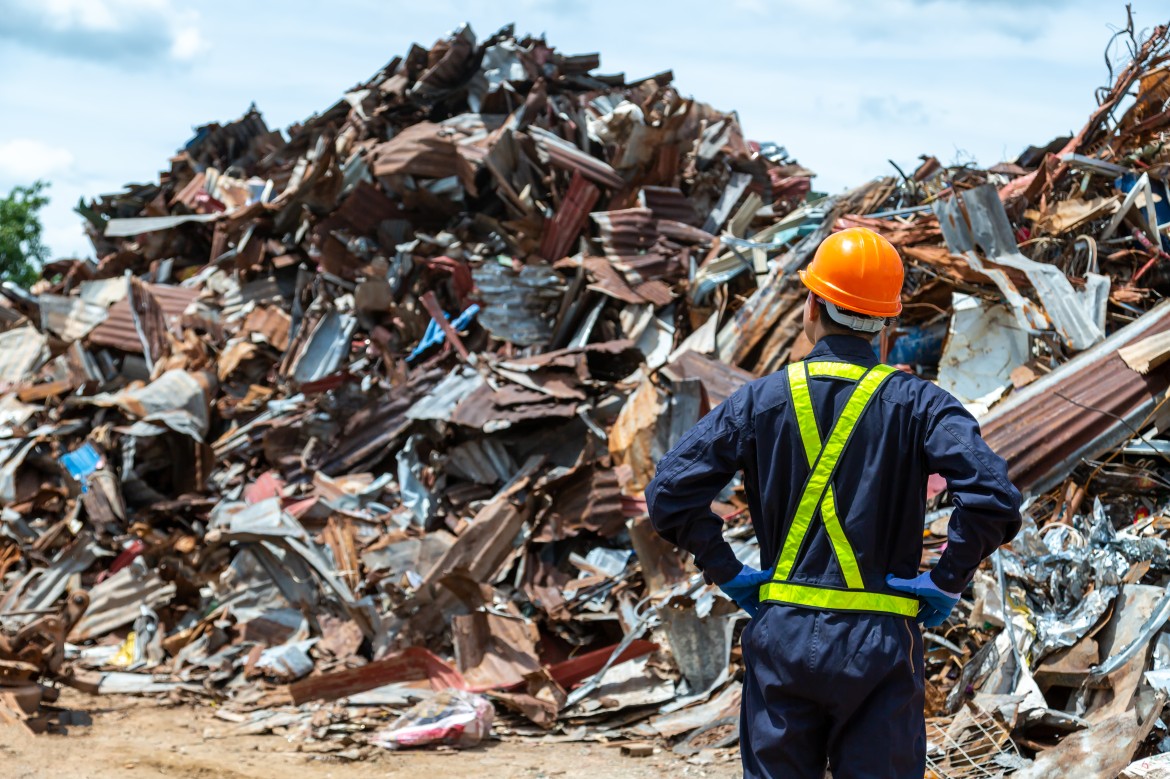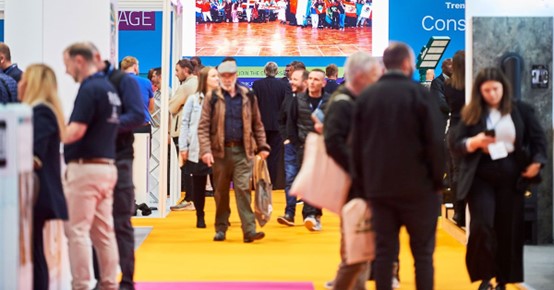October 23.2025

Every year, the global construction industry generates an enermous amount of construction waste, from concrete and metal scraps to packaging materials and broken tiles. As cities expand and infrastructure projects accelerate, this mountain of debris continues to grow, posing serious environmental and economic challenges.
Across the world, governments and builders are now rethinking how they could handle, track, and repurpose construction waste. New technologies and smarter construction waste management strategies are transforming what was once seen as a byproduct into an opportunity for efficiency and sustainability. The shift signals a defining moment for the industry, one where innovation may finally help build a cleaner, more resource-efficient future.
What Does Construction Waste Mean – And How Do We Manage It?

Construction waste broadly refers to any material discarded during the processes of construction, renovation, demolition, or site preparation. This includes:
1. Excess concrete, bricks, and masonry
2. Steel, rebar cutoffs, and metal off‑cuts
3. Wood offcuts, formwork, pallets
4. Insulation, plastics, and packaging
5. Tiles, broken ceramics, debris
6. Soil and excavated earth
Effectively managing construction waste means more than disposing of it properly. It involves prevention, minimization, reuse, recycling, and finally responsible disposal. In practice, this means:
1. Estimating material needs precisely to avoid over‑ordering
2. Designing for modularity or disassembly, so that elements can be reused later
3. On‑site sorting and segregation of waste streams
4. Recycling or repurposing waste (e.g. crushed concrete for fill)
5. Tracking and auditing waste flows to measure and improve performance
A closer examination reveals that effective construction waste strategies depend on collaboration across every stage of a project. Instead of treating construction waste management as a standalone task, it should be integrated into design, procurement, logistics, and site operations. Waste reduction is also a key element of lean construction—where minimizing inefficiencies and making waste visible becomes part of overall project performance, not just an afterthought.
Tech & BIM Innovations for Construction Waste

One of the more exciting frontiers in managing construction waste is the use of digital tools, particularly BIM (Building Information Modeling) and allied technologies. These tools are helping to shift waste control upstream, enabling better predictions, coordination, and decision support.
How BIM Helps Construction Waste Reduction
BIM is no longer just about 3D visualization. Over time, it has evolved into 4D (time), 5D (cost), and even 6D/7D (sustainability, lifecycle) dimensions. In waste management, BIM supports:
1. Clash detection & design validation: spotting conflicts early reduces costly rework and waste.
2. Accurate quantity take‑offs: knowing exactly how much material is needed limits over‑ordering and leftover scrap.
3. Phase planning and logistics modeling: sequencing delivery and installation to avoid staging waste, excess handling, or double movements.
4. Digital fabrication and prefabrication: off‑site assembly with tight tolerances reduces on‑site cutting waste.
5. Integration with analytics / AI: newer systems predict waste streams and propose circular reuse, such as in a recent BIM + ML integrated model for demolition waste.
These benefits are evident in real-world applications. For example, PT Adhi Karya’s adoption of Glodon’s 5D BIM in Indonesia allowed the company to tightly monitor materials and scheduling—cutting down unnecessary orders and reducing site waste. Their integration of cost and time data with material tracking is setting new standards for digitalized construction. You can learn more about their story here.
With 5D BIM solutions like Glodon Cubicost, project teams can calculate material volumes with greater precision. This accuracy helps ensure that material purchases match actual project needs, reducing excess orders and minimizing construction waste. Beyond improving cost control, it also supports more sustainable construction practices by cutting down on unnecessary resource use.
A broader discussion of how BIM ties into sustainability and construction waste efficiency is also explored in AZobuild’s article, offering additional insights into its adoption.
Practical Waste Reduction on the Ground

Technology isn’t the only answer. On-the-ground practices can make an immediate impact on construction waste, especially when projects don’t yet have access to advanced digital tools.
Some of the most effective practical strategies include:
1. Designing to reduce cuts and waste
2. Using prefabricated or modular components
3. Implementing just-in-time material delivery
4. Sorting and reusing scrap materials on-site
5. Training workers and setting incentives for reducing waste
Practical methods often begin with awareness, empowering teams to rethink how they manage construction waste in their daily work.
The key is alignment: everyone involved in a project, from architects and engineers to subcontractors and site workers, needs to understand how small adjustments in material use and handling can lead to significant reductions in waste. When awareness and collaboration come together, even simple on-site practices can have a lasting impact on both efficiency and sustainability.
From Rubble to Residences: Kazakhstan’s Bold Move on Construction Waste
In Kazakhstan, a bold experiment is flipping the script on construction waste, where they turn demolition debris into durable housing.
This World Bank blog article spotlighted a groundbreaking project in Kazakhstan where mobile crushers and 3D concrete printing were used to transform broken concrete and steel into a fully printed home. Instead of sending rubble to landfills, materials were processed on-site and reused in real time.
The result? Lower material costs, reduced carbon emissions, and faster build times, all while creating new green jobs in recycling and digital construction.
The success of this initiative is now informing national policy. Kazakhstan’s Ministry of Ecology is drafting a strategy to scale these circular practices across the country.
This case proves that with the right mindset and tools, even debris can lay the foundation for a smarter, more sustainable future.
Challenges and Future of Waste Management

While progress is being made, managing construction waste on a larger scale presents persistent challenges:
1. Cost and economic mindset: Many still see waste reduction as an added expense
2. Lack of standardization: Regulations differ drastically between regions
3. Limited recycling infrastructure: Especially in developing markets
4. Data fragmentation: Poor data sharing hampers holistic tracking
5. Cultural resistance: Traditional practices remain deeply ingrained
Yet the future remains promising. The industry is shifting toward a more circular mindset, where design, deconstruction, and reuse are embedded from the start. From this, it’s clear collaboration between tech providers, contractors, and regulators will be key to effective construction waste management.
Digitally-enabled traceability, material passports, AI-based material tracking, and environmental performance metrics will all define how waste is managed in the coming decade.
Construction waste is no longer just a byproduct of progress—it’s both a challenge and an opportunity for the industry to evolve. Those who take the lead in adopting smarter, data-driven strategies—whether through practical on-site methods or advanced digital tools—will not only reduce costs but also build a more sustainable and resilient future.
At Glodon, our work across Southeast Asia shows how digital solutions like 5D BIM can bring greater accuracy and accountability to construction waste management. By improving planning, estimation, and project coordination, these technologies help minimize waste and promote more sustainable construction practices.
Curious how digital innovation is transforming construction waste management? Learn more here.






